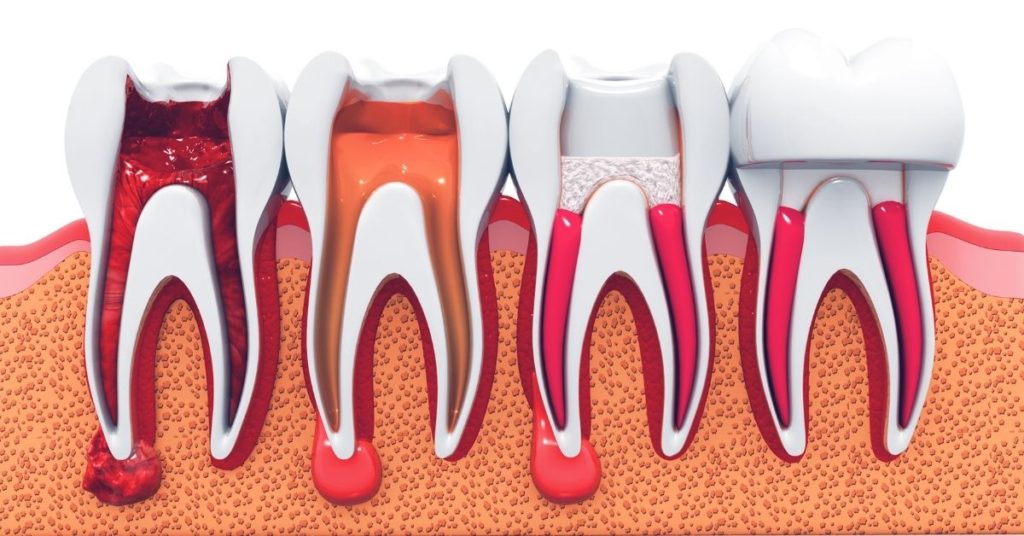- Dentistry Mosonmagyaróvár
Tooth decay, which affects the outer and middle layers of the tooth, the enamel and dentin, can be treated with fillings in most cases. However, if the damage extends to the innermost part of the tooth, which is lined with blood vessels and nerves, and this so-called periodontal gut becomes inflamed, a root canal treatment is required.

Inflammation and death of the periodontal bowel is often accompanied by very severe, throbbing pain and, in addition to tooth decay, can also have other causes that enter the periodontal cavity, such as an injury to the tooth. However, a root canal treatment can also be carried out with an intact periodontal intestine, for example if the root canal is opened for a crown when grinding a tooth.
During root canal treatment, the root canals in the tooth are exposed – one in the incisors and canines, and up to three or four in the molars – and the infected, dead structures are removed from the periodontal intestine. This eliminates the pain and inflammation that would lead to tooth loss over time and can cause systemic discomfort that can form a focus and spread throughout the body.

It is very important that the last step is carried out in a completely symptom-free state and that the root filling completely fills the cavity up to the root tip to prevent re-infection and possible rupture of the root. If root canal treatment is unsuccessful, for example if not all root canals are uncovered and filled or if the filling does not reach the root tip, a focus or even a cyst may form around the tooth. In such cases, repeated root canal treatment and/or removal of the root tip (so-called root resection) is required.
A root canal, which is the cleaning and sealing of the cavities of an inflamed, infected, and dead plaque-laden tooth, can eliminate local or even full-body problems, and instead of losing the tooth, it can remain part of the dentition for many years or decades.
Initially, gingivitis can become noticeable through hypersensitivity of the tooth: Pain can occur when chewing, when straining the tooth or when consuming cold, hot or even sweet food and drinks. As the inflammation worsens, there can be constant, severe pain, facial swelling, and even systemic symptoms (e.g., fever). However, it also happens that the inflammation and death of the periodontal intestine are completely symptomless and the problem only becomes visible on X-rays.
Although quick removal of an inflamed, painful tooth may seem like a cheap and easy solution at first, the resulting loss of teeth then causes not only aesthetic problems, but also leads to the displacement of neighboring teeth and even overloading of other teeth. Dental treatment therefore aims to save a tooth for as long as possible, and a root canal is a good – and certainly cheaper – way to achieve this.
Root canal treatment is performed under anesthetic so there is no pain.

Fill out the form, click the login button, and we will contact you soon.
Dr. Bekő Gabriella
Implanmed © 2022. All rights reserved!